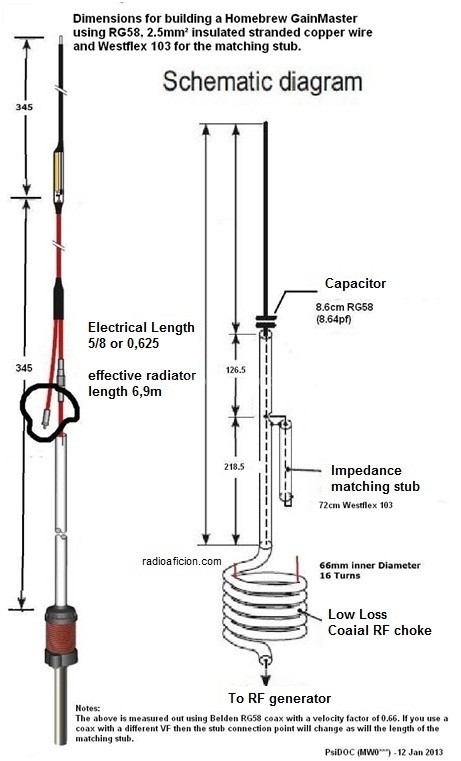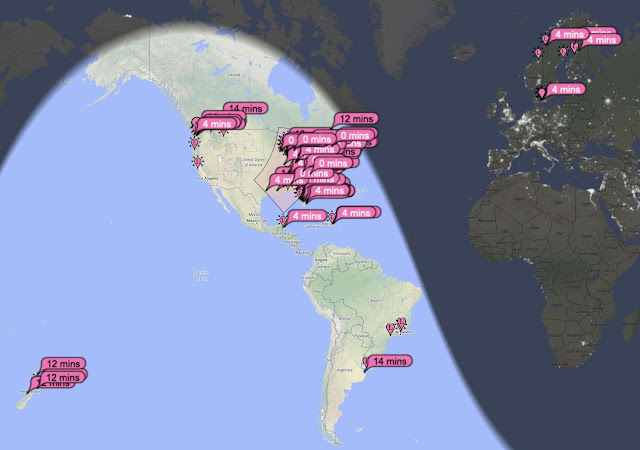- Top half is wire extending beyond capacitor, bottom half is the outside of the coax shield down to the choke.
- Capacitor in series with the center conductor tunes out the inductive reactance leaving 180 ohms resistive.
- 50 ohm point is found where the stub attaches, the coax from this point running down to the choke is matched to 50 ohms.
- The length of coax between the end of the stub (hanging off the side) and the capacitor forms the total stub length.
- Assuming I got my math right: The length of the stub is a 1/4 wavelength at 25 MHz when the VF of 0.66 is taken into account! Why this length I'm not sure, we can shorten the stub to be a 1/4 wave at 27.2 MHz and with some trial and error find the 50 ohm point and a cap value that gives a 50 ohm match.
Monday, January 24, 2022
Gain Master Antenna Model
Sunday, January 16, 2022
10m Surprise
Two days ago a CME occurred, I happened to be on 10m FT8 as prior to this the MUF map suggested the band might open.
Ten minutes before mid-day my eyes just about fell out of my head when I saw northern EU stations calling CQ up-to 17 dB SNR! A quick look at SolarHam confirmed there had been an CME event, and that I had indeed caught the effects of it as it happened.
Over the next couple of hours logged Finland (4 stations), Norway, Denmark and Sweden. Nothing below or beyond that area showed any signals here.
The polar path was having the usual effects on signals, from "fuzzing" them on the waterfall, to one or two decodes and then nothing, quite a number of partially completed contacts in the FT8 sequence. The signals from northern Europe would come in waves, they'd be there for a couple of minutes then gone again, a few minutes later they're back for a few.
ZL even appeared for a little bit, but nothing else across the Pacific.
EU on 10m, that's a first for me.
Yesterday 10m served up another surprise, while I didn't get any openings to new DX, some very short hop propagation appeared, and I logged three WY stations consecutively, and finally got NM on 10m which completed the last two states I needed for WAS on 10m. That makes ID on 15m the last one needed to complete 5-band WAS.





